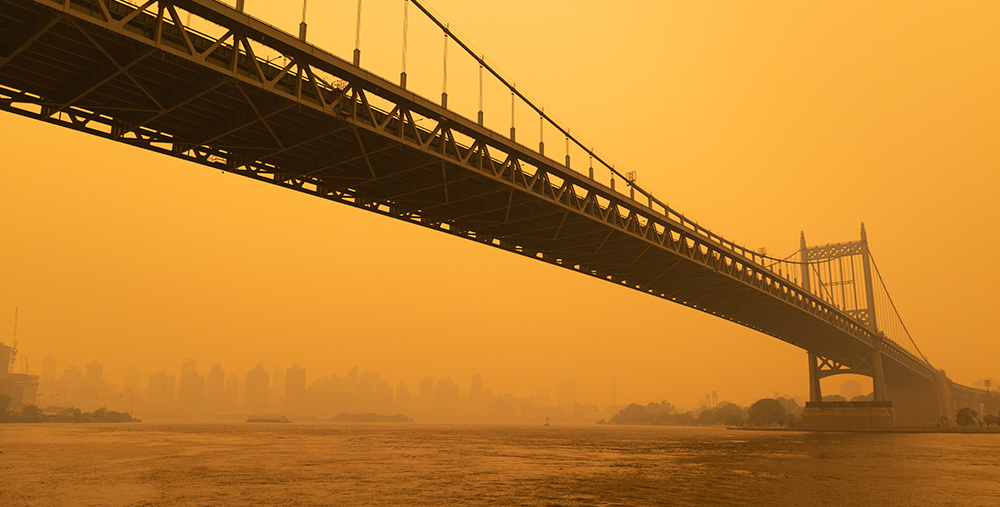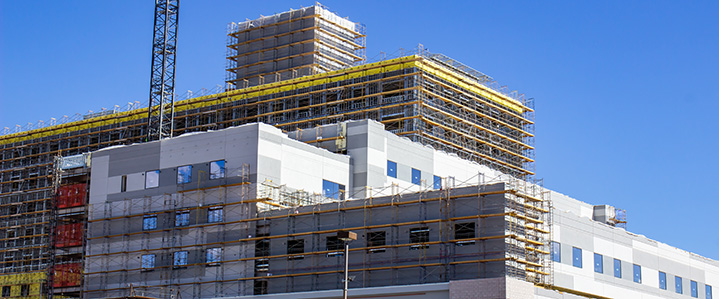Why Buildings Across the U.S. Need a Wildfire Smoke Readiness Plan


5 Minute Read
Building owners across the United States have learned that no area of the country is immune from the negative health impacts of wildfire smoke. As of June 2025, Canada is experiencing a record-breaking wildfire season with more than 7.8 million acres already burned and triggering air-quality concerns across several US regions.
Wildfire smoke presents a significant and increasing threat to human health. Breathing in the airborne particulate matter (PM) generated by wildfire smoke (fine particles known as PM2.5 for their size measuring 2.5 microns or less in diameter) can impact respiratory and cardiovascular health. Moreover, a 2021 study published in Nature Communication concluded that the PM2.5 generated by wildfire smoke is up to 10 times more harmful to human health than PM2.5 emitted by other sources.
The good news is there are steps building owners and managers can take to prepare their buildings for safe operation. It begins with having a plan for managing indoor air quality (IAQ) in the event of wildfire.
Proactive planning today speeds action tomorrow
When air quality is impacted by wildfire smoke, public health authorities may urge people to stay indoors. (For example, in Massachusetts these warnings are provided by the Department of Environmental Protection.) But what happens when that smoke finds its way indoors through ventilation systems, the building envelope, or other means? This is where it becomes essential for facility managers to have a plan in place for protecting building occupants.
This planning also can add to a building’s overall value to tenants and communities. For example, the EPA has issued resources encouraging schools, commercial buildings, and community centers to establish “cleaner air spaces” where people can find relief from smoke. Building owners that can offer proof-of-healthy indoor air stand to provide reassurance to occupants during any event that generates elevated PM2.5 conditions.
Establishing a plan today enables facility managers and building engineers to jump into action in the event that the EPA’s Air Quality Index reaches “unhealthy” levels in your area. This plan also ensures that any changes made to reduce the risk of unhealthy indoor air won’t impact building operations after the risk has passed.
What to include in your smoke readiness plan
To establish a smoke readiness plan, consider the following six steps.
1. Secure multi-disciplinary input
Conversations around building modifications should involve stakeholders from facilities management, environmental health and services, and building engineers, as applicable. Reach out to any mechanical contractors or related consultants, as well. Their guidance can ensure any required changes can be made rapidly in the event of poor IAQ.
2. Perform HVAC maintenance and upgrades
The American Society of Heating, Refrigerating, and Air-Conditioning Engineers (ASHRAE) offers a useful framework for the development of a smoke readiness plan. In its Planning Framework for Protecting Commercial Building Occupants from Smoke During Wildfire Events, ASHRAE advises that building owners perform maintenance and required upgrades to their HVAC systems well in advance of wildfire season. One reason this is essential is that increasing the filtration in air-handling systems to a Minimum Efficiency Reporting Value (MERV)-13 filter or greater plays a pivotal role in helping capture these particulates. However, some fan systems may not be able to overcome the pressure drop of these filters and maintain appropriate airflow. Connecting with mechanical contractors or consultants in the planning phase can prepare your HVAC system to provide the required level of filtration when it’s needed.
3. Monitor indoor air quality
Monitoring the air for PM2.5 can help facility managers determine when it is time to make changes to filtration and ventilation. In addition, as outdoor concentrations of PM2.5 increase, indoor concentrations should be monitored to ensure appropriate ventilation and filtration is maintained.
Building managers have options for monitoring, from low-cost handheld sensors to more sophisticated systems that can be installed in the building for continuous monitoring. This 24/7 IAQ monitoring can give owners the opportunity to address potential issues –including but not limited to wildfire smoke – before they become major problems. When data is shared via an online dashboard, continuous monitoring also can provide peace of mind for building occupants.
4. Increase filtration, if needed
Once monitoring determines the risk of PM2.5 entering the building, facility managers may increase filtration. However, it is important to keep in mind that these changes have the potential to create new issues. For example, using higher-rated filters could restrict airflow and potentially depressurize the building, exacerbating poor IAQ. While operating under restricted conditions, monitoring for additional factors, such as humidity and pressurization, can prevent new problems.
5. Consider local support
In the event that wildfire smoke does enter the building, portable air cleaners can provide additional support, where monitoring may indicate it’s needed. The Association of Home Appliance Manufacturers (AHAM) provides a database of air cleaners to identify the right solutions for a specific room size.
6. Return to a normal state of operation
Once exterior conditions are back to normal, the HVAC system should also return to its standard operating conditions. However, that may not be as simple as flicking a switch. This might involve some level of performance testing or system balancing. Ignoring this step could lead to higher energy demands or shorten equipment lifespans.
Maximize the impact of your plan
Wildfire smoke can enter a building through many routes. Identifying all potential pathways is essential for tailoring a response. This is an area where building managers may find it helpful to reach out to a consultant who can conduct a building or portfolio-wide assessment and develop a comprehensive smoke readiness plan.
EH&E has helped building owners around the country assess IAQ threats, monitor for fine particulates, and implement the engineering controls that keep building occupants safe. For support in shaping an indoor environment that provides a safe space for people to escape the dangers of wildfire smoke, contact EH&E today.
Subscribe
to our blog
"*" indicates required fields





